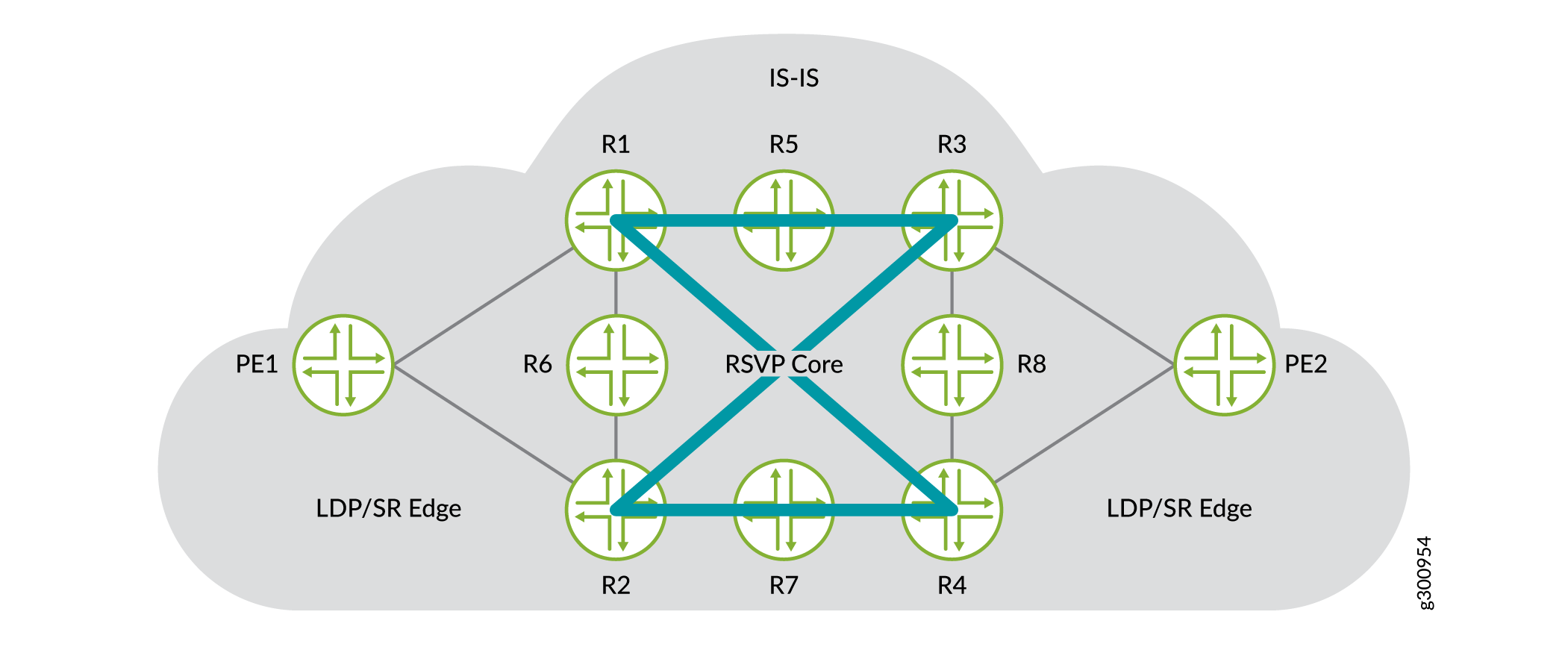Understanding Segment Routing over RSVP Forwarding Adjacency in IS-IS
Segment routing architecture enables the ingress nodes in a core network to steer traffic through explicit paths through the network. The architecture provides the mechanism to enable source routing. Paths are encoded as sequences of topological subpaths called segments, which are advertised by link-state routing protocols such as IS-IS and OSPF.
A forwarding adjacency is a traffic engineered label-switched path (LSP) that is configured between two nodes and that is used by the interior gateway protocol (IGP) to forward traffic. The forwarding adjacency creates a tunneled path for sending data between peer devices in an RSVP LSP network.
Starting in Release 20.1R1, Junos OS supports segment routing traffic to be carried over RSVP LSPs that are advertised as forwarding adjacencies in IS-IS.
Benefits of Segment Routing over RSVP LSPs
Reduces network complexity by removing protocols such as LDP
Leverages IGPs such as IS-IS, and RSVP for efficient and flexible forwarding
Provides a faster and more efficient way of forwarding traffic in the RSVP core network.
Figure 1 illustrates the typical deployment network for segment routing over RSVP forwarding adjacency.

The network consists of provider edge (PE) routers configured with LDP on the edge and RSVP in the core. You can easily replace LDP with IS-IS segment routing because segment routing eliminates the need for MPLS signaling protocols such as LDP. As a result, you enable network simplification by removing a protocol from the network.
How IS-IS Segment Routing over RSVP Forwarding Adjacency Works
RSVP LSPs are configured as links in IS-IS. IS-IS builds dummy adjacencies over these links (no hellos) and advertises them as links in LSPs. Because RSVP LSPs are advertised as forwarding adjacencies, the LDP or segment routing edge nodes can forward traffic toward appropriate core nodes. The metric on RSVP LSPs is manipulated to manage traffic steering from the head node to the end nodes. RSVP uses the shortest-path-first (SPF) algorithm to compute the shortest path to all nodes in the network. As a result, when IP routes point to RSVP LSPs, segment routing routes also point to these LSPs as segment routing reuses the SPF computation performed for the IP routes.
